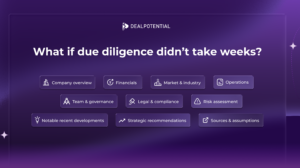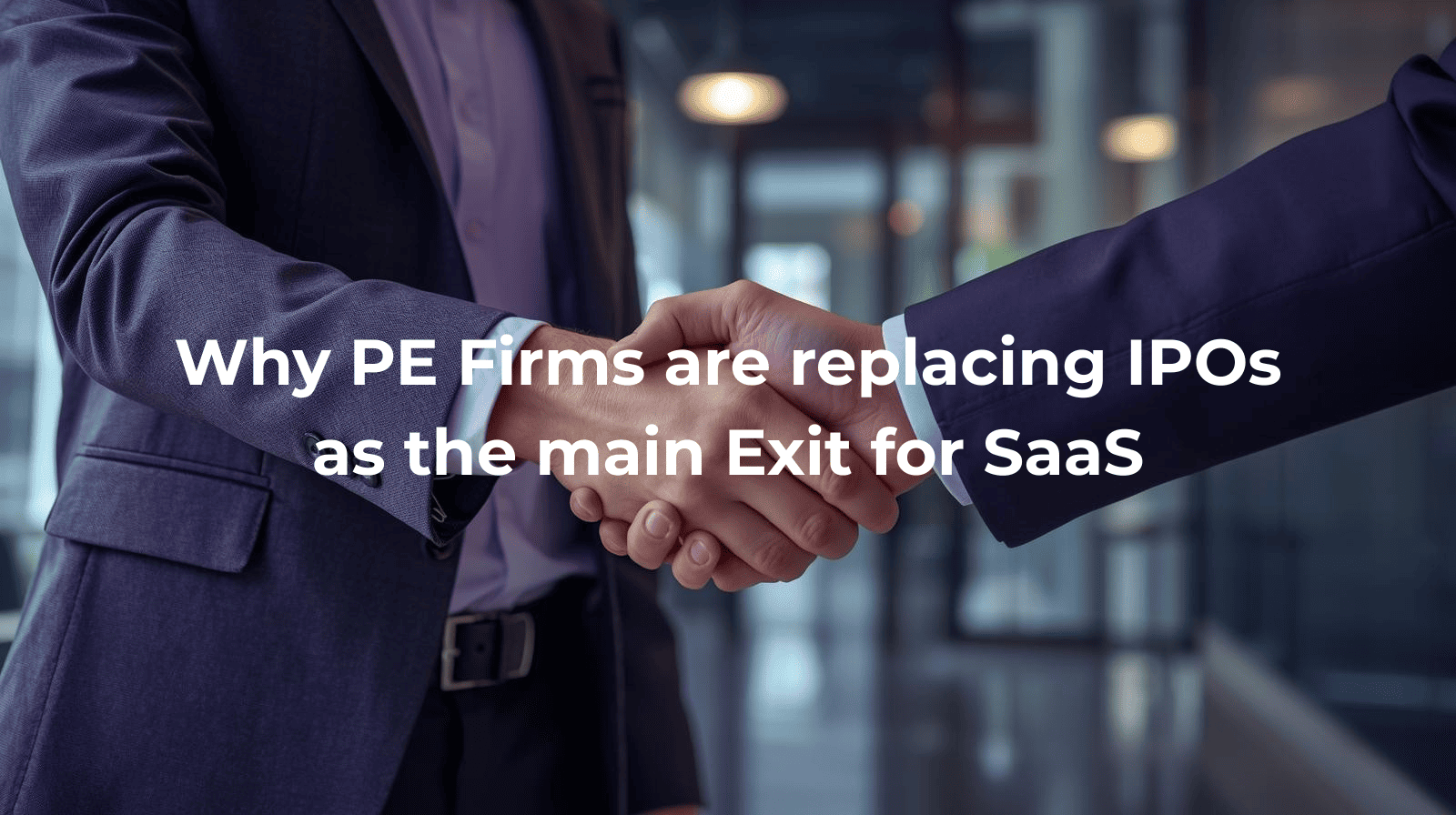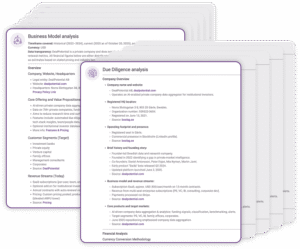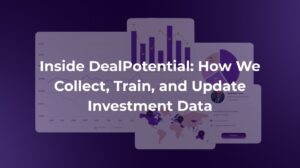
What if due diligence didn’t take weeks?
A leading US investment bank, focused on early- and growth-stage transactions, finally found a single tool to unify its fragmented deal intelligence.

In recent years, PE replaces IPOs has become not just a trend but a strategic shift in the exit playbook for SaaS businesses.
Rather than pursuing the public markets, more founders and investors are turning to private equity (PE) as the preferred route. That’s crucial for founders, LPs, and deal teams aligned with DealPotential’s mission.
Here’s why PE replaces IPOs is accelerating and how DealPotential positions itself at the center of this shift.
Market Volatility and Timing Risk
Public markets today demand consistent growth, predictable earnings, and macro stability. SaaS firms facing churn, margin compression, or macro uncertainty are vulnerable to IPO timing risk. Many companies delay or cancel planned IPOs when markets turn.
Once public, SaaS firms bear expensive compliance, quarterly reporting pressures, and governance constraints.
PE exits let them avoid these burdens, enabling more flexibility to execute medium‑term strategies before a future public offering (if ever).
In public markets, valuations for SaaS are often benchmarked aggressively. During downturns, multiple compression is brutal. PE buyers, by contrast, can structure deals using flexible earn‑outs or growth-based metrics that better reflect SaaS economics.
1. Growth Capital + Operational Partnering
PE firms are increasingly focused on growth buyouts. They bring capital, operational support, and industry networks not just financial engineering. For SaaS firms needing scale, this alignment is compelling.
2. De-risked Exits for Founders and Early Investors
PE exits often allow partial liquidity for founders, employees, and early backers while preserving upside. That contrasts with IPOs, which often require lock‑ups and full public commitment.
3. Flexibility in Structuring and Timing
PE deals can incorporate structured earn‑outs, rollover equity, preferred returns, and flexible exit horizons. That adaptability suits the evolving SaaS landscape better than rigid IPO pricing windows.
4. Signal of Maturation in SaaS Market
The shift indicates a maturation: SaaS is no longer only a venture asset class but a stable, scalable business category. PE firms now view SaaS as core, driving more capital competition and appetite.
LPs and Limited Partners should expect more allocations to growth and continuation funds focused on SaaS, rather than relying on public market listings.
Founders must understand that sellers’ expectations, term sheets, and growth plans are evolving: preparing for PE-style diligence and governance is now table stakes.
Deal teams and advisors gain higher leverage if they can source SaaS deals with recurring revenue, strong unit economics, and defensibility.
At DealPotential, we provide unique dealflow intelligence that helps you identify SaaS companies poised for private equity acquisitions long before they hit the broader market.
We surfaces signals such as growth acceleration, ownership structure, expansion stage, and capital needs, allowing you to spot founder-owned and investor-ready companies that fit your M&A or buyout strategy.
By combining company classifications, investor insights, and data-driven “signals,” DealPotential enables investors and advisors to target deals before they become obvious and to position themselves strategically as the market shifts from IPOs toward PE-driven exits.
When private equity replaces IPOs as the dominant exit path, DealPotential is your edge in identifying the next wave of high-potential SaaS opportunities.
SHARE:
Book a free demo with DealPotential and get real-time insights on the next billion-dollar opportunities.

A leading US investment bank, focused on early- and growth-stage transactions, finally found a single tool to unify its fragmented deal intelligence.

Smarter valuations, sharper filters, and deeper insights, all live now.

Investment data intelligence drives smarter deal sourcing. Discover how DealPotential collects and trains private-market data.
We use cookies to improve your experience, analyze web traffic, deliver customized content, and support marketing efforts.
DealPotential Investment Intelligence Platform Proposal Agreement
WHEREAS, the Seller agrees to provide access to the DealPotential Investment Intelligence Platform,
WHEREAS, the Client agrees to purchase the DealPotential Investment Intelligence Platform according to the terms and conditions laid out in this contract.
THEREFORE, in consideration of the mutual agreement made by the parties hereto, the Seller and the Purchaser (individually, each a “Party” and collectively, the “Parties”) agree to the following:
2. Subscription: By subscribing to the Platform, you agree to pay the monthly or yearly subscription fee, as specified in your subscription plan.
3. Payment: Payment is due monthly in advance and processed via Stripe. The subscription renews automatically until cancelled.
4. Cancellation: You may cancel your subscription at any time, and it will take effect at the end of the current billing cycle. No refunds will be provided for partial months.
5. Data Privacy: We are committed to safeguarding your data. Please refer to our Privacy Policy for details on data handling and protection.
6. Intellectual Property: All content, data, and reports provided by the Platform are protected by intellectual property laws and are for your internal use only.
7. Termination: We reserve the right to terminate your access to the Platform for any violation of these terms or for any reason at our discretion.
8. Governing Law: These terms are governed by the laws of Sweden, and any disputes shall be subject to the exclusive jurisdiction of the courts in Sweden.
10. Disclaimer: We disclaim all responsibility for any decisions made by users based on the data provided in our platform. All investment decisions are solely the responsibility of the user. We are not involved in any user decisions and only provide data and assessments for informational purposes.